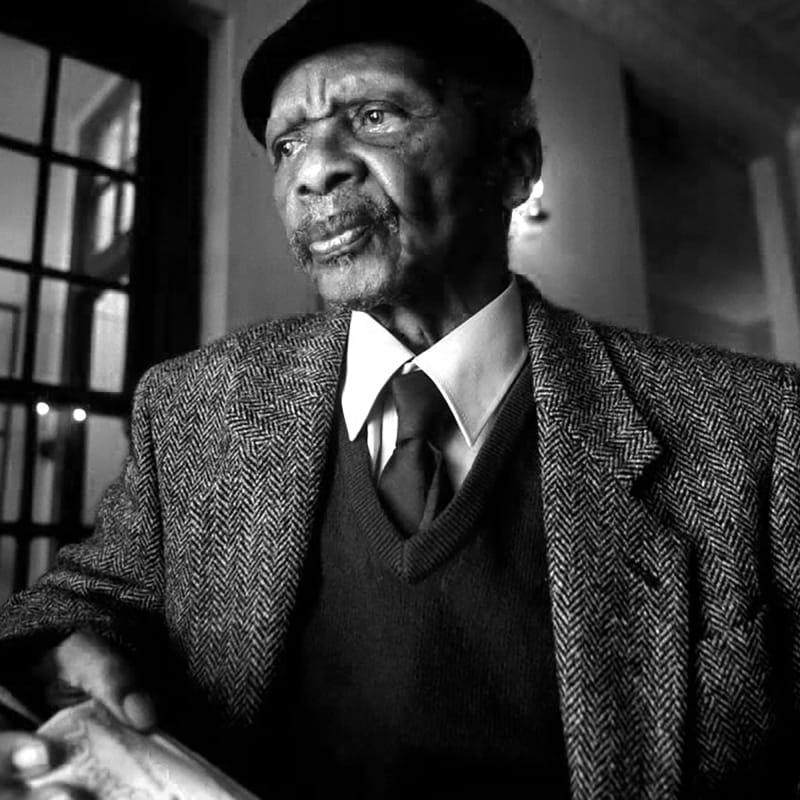Ernest Mancoba South African, 1904-2002
Ernest Mancoba (1904-2002) was born near Johannesburg in 1904. Educated at the Christian missionary school of Pietersburg, Mancoba attended the training college of Grace Dieu where he was was trained as a sculptor. In 1929 he produced his most famous and controversial work in South Africa, Bantu Madonna (1929). The work portrayed the Virgin as an African.
In the 1930s he moved to Cape Town where he began to visit the studio of Lippy Lipschitz – a South African modernist who had been trained in Europe. Lipschitz recommended that Mancoba read Paul Guillaume’s book Primitive Negro Sculpture, an event which had a deep influence of him.
In 1938, he left South Africa for Paris, where he signed up at the Ecole des Arts
Decoratifs. There he was introduce the Danish artist Sonja Ferlov. Or as Mancoba described her, as a woman ‘who was to become my lifetime comrade and spouse.’ On seeing Ferlov’s work, he stated, ‘it at once struck me that those sculptures were a tentative way to seek a new way out of our crisis. I felt spiritually in agreement … I felt at home.’
Mancoba was drawn ever closer to Ferlov, whose studio was next to Alberto Giacometti’s. Giacometti helped Ernest and Sonja both financially and artistically. Mancoba then took the studio above the famous Swiss artist’s. As Mancoba described it, Giacometti’s ‘unique personality brought us one of the richest experiences in our life.’
Under these influences and regular visits to the Musée de l’Homme, which exhibited an array of African cultural and ethnographic objects, Mancoba began to develop a style markedly different from his work in South Africa. His 1940 painting Composition (1940), took a Congolese Kuba mask and reproduced it in a modernist style that foreshadowed Abstract Expressionism.
In 1940, Mancoba was interned by the Nazis at St Denis. Little is known of this period in his life. After the war, Ernest and Sonja became closely associated with the CoBrA art movement. CoBrA placed an emphasis on non-Western and African art. As art historian Karen Kurczynski states, CoBrA artists addressed ‘not just the traumatic experience of World War II, but also the ongoing nature of political violence during the Cold War and colonial independence movements.’But although these were issues close to Mancoba’s heart, he and Sonja remained at the edges of the movement. Mancoba remained largely unknown and reclusive until the 1990s. In 2019 a retrospective of his work was held at the Pompidou Centre entitled ‘I shall dance in another society’.
Major Exhibitions
2021 Ernest Mancoba: Freedom through Art, Museum Jorn, Silkeborg, Denmark
2019 Ernest Mancoba I shall dance in another society’, Centre Pompidou Paris ,4e, Paris, France
2017 Ernest Mancoba, Aicon Gallery, Greenwich Village, New York, USA
2014 EWS, Stevenson, Cape Town, Cape Town, South Africa
Collections
Iziko South African National Gallery, Cape Town
Johannesburg Art Gallery (JAG), Johannesburg


